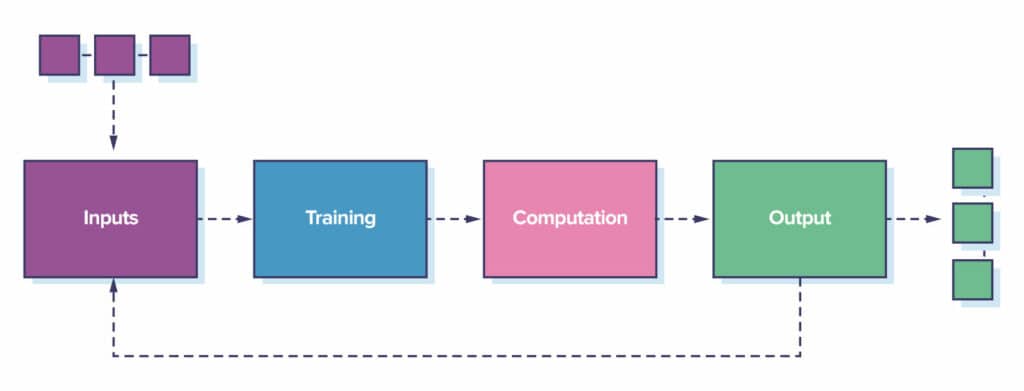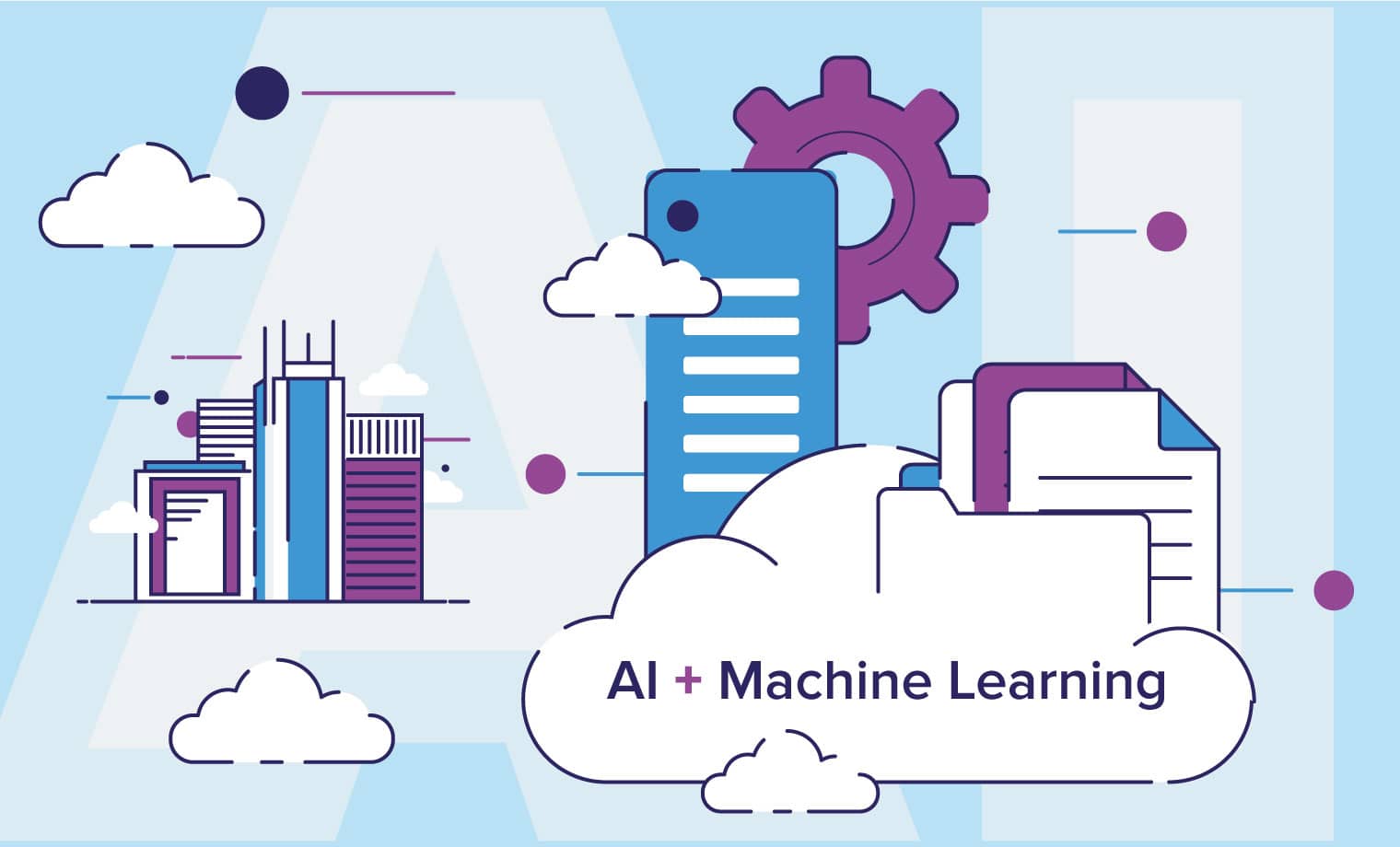Using AI in business is gaining serious traction.
Unless you’ve been living in the remote woods of Canada for the last year (and the Yukon is b-e-a-utiful, by the way), you’ve seen artificial intelligence exploding everywhere.
This blog includes a primer on how AI works, how you’ve been using AI for years (even if you didn’t call it AI), and how you can use AI to accelerate your marketing efforts.
Harnessing the power of AI within companies is the future. And it’s here. Are you using it to your advantage?
How do AI models work?
AI development can be broken down into a simple model for understanding. Here’s a general overview:
- Data inputs are labeled and associated during the training phase.
- The AI model uses statistical and machine learning to make predictions and classifications based on feedback loops.
- The AI model delivers final outputs as predictions, classifications, recommendations, or generated content.

The evolution of artificial intelligence in business (and our personal lives)
AI has been incrementally shaping our lives for decades. Many of these examples hide in plain sight, including:
- Word processors: Microsoft Word, Email platforms, Grammarly.
A spell check + grammar check + autocorrect = text prediction. - Social media algorithms: Facebook, TikTok, LinkedIn, Instagram, etc.
Content feeds, recommendations, and image filters are generated as the platform learns more about you. - GPS-based navigation apps: Apple & Google Maps, Waze.
Traffic analysis + pattern recognition = route optimization. - Streaming services: Netflix, Spotify, Hulu, YouTube.
Recommendations, predictions, and curation.
There are hundreds of other examples of AI, like email filters and sorting, customer service chatbots, translation services and apps, photo editing and filters, virtual assistants, smart replies in apps, and any e-commerce recommendations.
You might not have known it as AI, but you’ve been using it in your business and marketing for years.
Applying AI in marketing efforts and business needs
The quest for the perfect image is the bane of marketers everywhere. Searching for something “just right” takes forever, and we often settle for something “close enough.”
One of the main areas where evolving AI tools massively impact marketing is visual imagery and asset generation. Tools like Midjourney, Leonardo, 3DFY, Ponzu, and others have advanced generative asset creation tenfold.
These tools provide:
- Highly specific image generation through prompting
- Text-to-3D and photo-to-3D asset generation
- Video, music, and voice-over audio generation
What can we do with these new tools?
While there are many questions and ethical considerations related to the use of some of these tools, several of them are entering the commercially viable arena already.
- Adobe’s Generative AI Image Fill Tool – available now
- Shutterstock’s partnership with OpenAI and image generation features – available now
- Note: Shutterstock owns the image and you license it. This requires careful thought and post-production work.
- Midjourney is still to be determined.

Examples of AI business uses
Using AI for content prompts is hot right now. From ChatGPT to Llama to Bard, many tech-forward businesses are utilizing these tools. Here’s our take:
- While helpful for idea generation or analysis, these tools offer very general responses that often come across as bland or just a bit off. It’s easy to spot when something is AI-generated. Tools already exist to check for this (as all teachers know!).
- It’s crucial that businesses take what’s good as a starting point, but rewrite for proper tone based on the channel and your brand voice. Personalization and optimization are huge challenges without an actual human who understands your business and its audience.
There are so many tools, features, and rollouts on the horizon; 2024 will see the introduction of even more AI advancements. So what looks promising?
- Meetings: Transcript-to-action/tasks for post-meeting analysis.
- Action Transformers: From AI output to AI implementation in-platform and automated for us. We’ll see this in personalized communications, B2B purchasing, etc.
- AI Assistants: Billions of dollars are being invested in assistants and this will happen without additional technology.
SGE (Search Generative Experience) and the future of Google Search
Now is the time to re-optimize your web presence for what future search engines will require.
After 25 years of focusing on providing users with curated lists of search results, Google is reimagining search with new forms of generative AI.
- Google’s Search Labs released generative AI in search.
- Search will answer questions for users instead of just providing resources and links.
- SGE builds answers from multiple sources.
- This will allow for deeper and more complex searches.
- It’s slated to go public before EOY (Dec. 2023).
This release will immediately shift the landscape for organic traffic, and organizations not positioned to take advantage of it will see large drop-offs in their site traffic.
What can businesses do to prepare for this major shift?
Act now.
- Lean into optimizing for long-tail, conversational search rather than a single keyword.
- This involves using natural language and targeting specific user intent vs. broad keywords and subjects.
Shifting now to these optimization strategies will benefit you on multiple fronts, including generative search, voice search, and AI-powered assistant search.
BFT is prepared for the future of AI in marketing
If you see gaps in your marketing plan for the items we discussed, reach out to the BFTeam for help.
We can utilize AI to analyze large data sets of your internal marketing efforts to pull out best practices, industry averages across customer sets, and key insights to drive performance. We’re already using it for current clients to:
- Analyze email marketing and campaign effectiveness
- Identify and explore trends across long periods
- Find causalities and correlations
- Utilize your unique data set to drive internal strategy
Take advantage of AI to power your business today.



